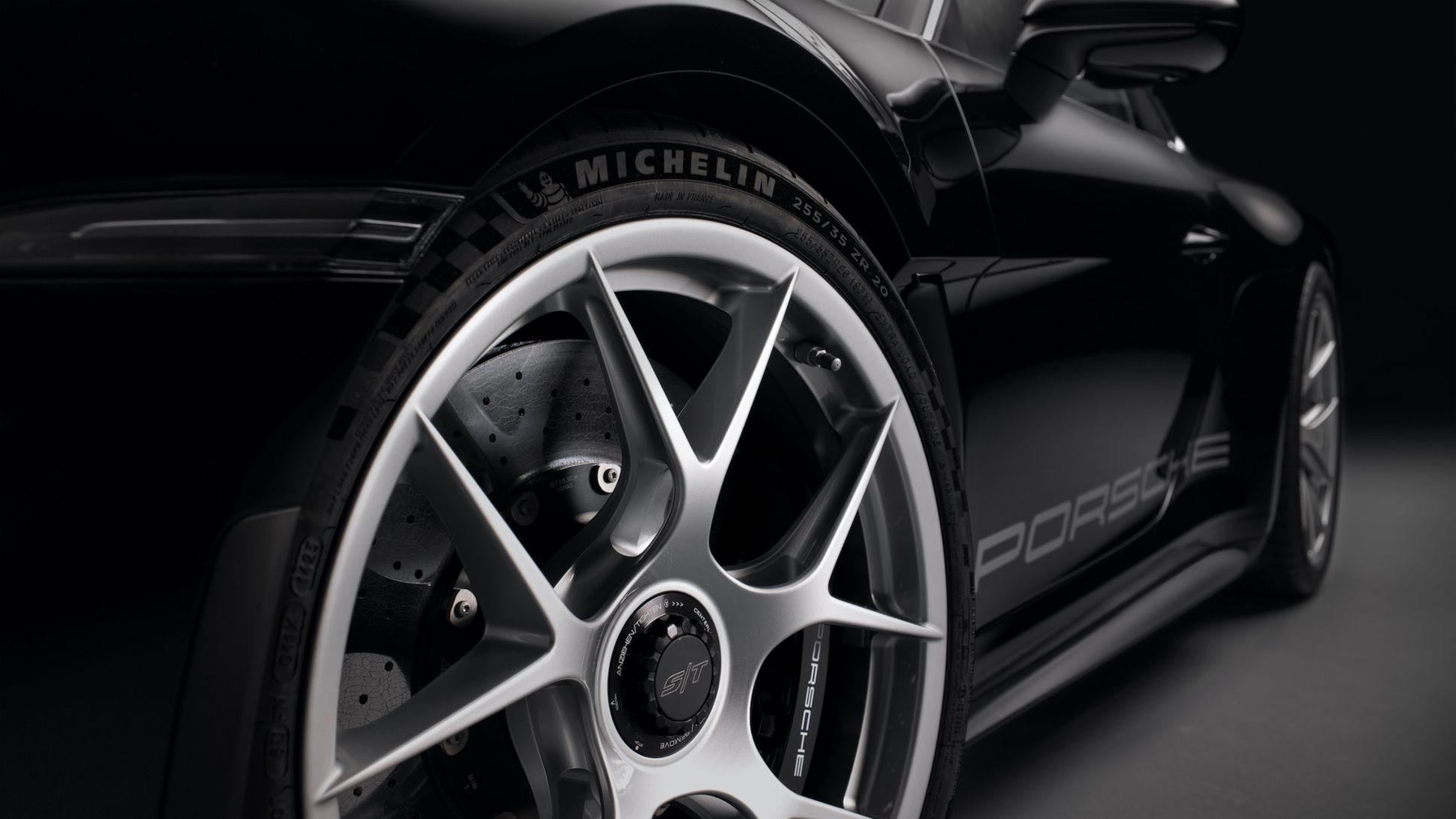Exclusive chassis design in the 911 S/T
Porsche equipped the 911 S/T with double-wishbone front suspension for optimal cornering performance and ideal braking precision. The design, familiar from the 911 GT3 Touring and 911 GT3 RS models, originated in the motorsport arena and is characterised by high camber stability during compression. In addition, it reduces the pitching movements of the body during sharp braking manoeuvres and therefore noticeably improves the car’s handling characteristics, especially in the upper limits of the car’s performance envelope. In the 911 S/T, Porsche has combined the double-wishbone front suspension with a multi-link rear axle without rear-wheel steering for the first time.
“The aim of the 911 S/T was to establish as direct a connection to the road as possible and to implement a unique driving experience,” says Frank Moser, head of the 718 and 911 model lines. “That’s why the car takes a lot of elements from motorsport while at the same time having a stripped-down equipment level.” In addition to saving weight, engineers targeted traditional, purist handling by dispensing with rear-wheel steering. With the use of uniball bearings on the front suspension (complete) and on the LSA five-link rear suspension (inside and outside on the lower wishbone), they also achieved increased driving precision. With all this in mind, the 911 S/T received a specific damper and steering tuning set-up that took all the individual parameters into account and gave the 911 S/T its unique character.
Porsche has equipped the 911 S/T with the lightweight and resilient Porsche Ceramic Composite Brake (PCCB) as standard. It includes brake discs with a diameter of 410 millimetres on the front and 390 mm at the rear. As in the 911 GT3 Touring, the range of driver assistance systems is adapted to the purist character of the 911 S/T. The agility-tuned Porsche Stability Management (PSM), for example, can be deactivated completely or with the exception of Traction Control (TC).

